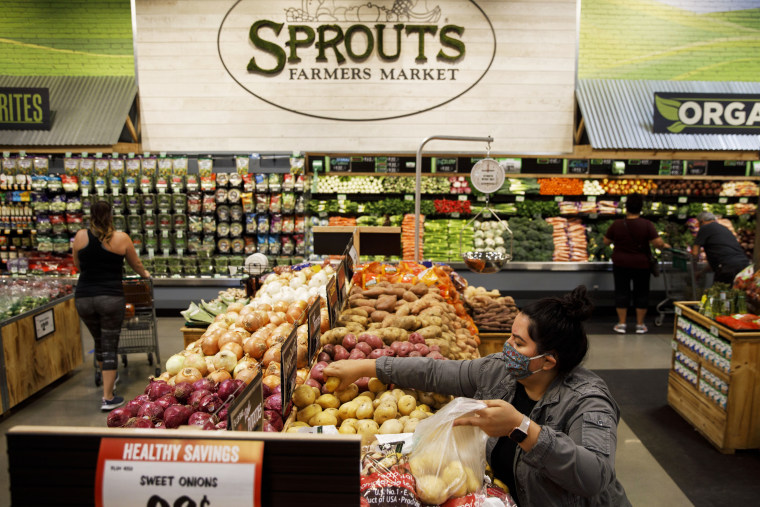Almost 90 percent of people receiving SNAP — the federal food assistance program formerly known as food stamps — are struggling to access healthy food, according to a U.S. Department of Agriculture (USDA) study released Wednesday.
The nearly 42 million Americans receiving SNAP benefits are one of the most food insecure populations in the country, and more than half responding to a survey said they simply can't afford the kind of nutritious food that makes up a healthy diet, the study revealed. For others surveyed, the top barriers to access included a lack of transportation to a grocery store or the time necessary to cook a healthy meal.
Stacy Dean, the USDA's deputy undersecretary for food, nutrition, and consumer services, said the study indicates that SNAP isn't doing what it's supposed to do. "SNAP benefits are a nutrition lifeline for millions of Americans, so it's vital that the program helps enable participants to achieve a healthy diet amidst the real world challenges they face. The study findings released today indicate that we're not yet there."
SNAP participants were surveyed in 2018 as the result of a 2014 proposal from the USDA's Food and Nutrition Service, based on the idea that more research was needed to understand the barriers to a healthy diet on SNAP. The average SNAP benefit, per person, per meal was about $1.40 at the time of the survey.
During the pandemic, everyone participating in SNAP was bumped up to the maximum benefit of $2 per meal. In March, Congress extended that boost through September as part of the American Rescue Plan.
But many experts in food assistance suggested that was merely a Band-Aid.
Susan Dietrich runs the Medway Village Church Food Pantry in Medway, Mass., where she serves SNAP recipients who can't get by on the food that SNAP provides them.
Dietrich said when Coronavirus aid bumped SNAP recipients up to the maximum benefit of $2 per person per meal, pantry attendance went down. But now that stimulus payments are out and the price of food continues to go up, she's seeing an increase in demand. "Volume is up 15 to 20 percent over the last couple months."
Dietrich focuses on providing fresh produce and meat at her pantry. "Their SNAP dollars aren't going as far as the prices are going up," she said, "Prepackaged foods that cost 10 for $1, that's not what you want your family eating."
Maximum benefit levels for SNAP are dictated by something called the "Thrifty Food Plan," which is supposed to reflect the minimum cost of a nutritious diet. But the plan hasn't been dramatically revised since it was introduced in 1975, only increasing in line with inflation throughout the years.
In January, the Biden administration challenged the USDA to reevaluate the plan ahead of schedule. The 2018 Farm Bill had already called for its reassessment by 2022. A USDA spokesperson told NBC News the agency is aiming to have an updated Thrifty Food Plan completed by the end of this summer.
"The Thrifty Food Plan is based on the assumption that people have a lot of time to price-shop and prepare meals from scratch, but the reality is that many families are juggling different jobs," Joseph Llobrera, director of research for the food assistance team at the Center on Budget and Policy Priorities told NBC News in February. "Building a food plan that assumes you're going to soak beans overnight rather than using canned beans — how realistic is that?"
Llobrera said the plan is also based on an outdated assumption that people spend the majority of their income on food, when most people now spend the biggest chunk of their paychecks on housing.
The demographics of who benefits from SNAP are diverse. According to a study of 2018 Census data by the Center on Budget and Policy Priorities think tank in Washington, more than 1.3 million veterans participated in SNAP. Census data from the same year shows that almost half of SNAP households include at least one child.
"The vast majority of people I meet on SNAP are working adults caring for their families — some of them children, some taking care of elderly family members — or they are seniors on fixed incomes, who are unable to maintain their basic household needs with the fixed benefit amounts that they're currently receiving," said Dietrich. "There's not a single person I know who's receiving SNAP benefits, who is doing so with the intent to take advantage of the system."
